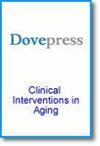改善经皮冠状动脉介入治疗后急性心肌梗死老年虚弱患者的下肢功能和虚弱程度:神经肌肉电刺激随机对照研究
IF 3.7
3区 医学
引用次数: 0
摘要
背景:作为一个全球性的公共卫生问题,老年急性心肌梗死(AMI)患者体弱与经皮冠状动脉介入治疗(PCI)后的不良预后密切相关。虽然运动干预是逆转和缓解虚弱的最常用方法,但由于心血管不稳定和自律神经失衡,运动干预在急性心肌梗死PCI术后患者中的应用受到限制。因此,需要一种新的实用干预方法来解决这些患者的虚弱综合征。目的:本研究旨在探讨神经肌肉电刺激对PCI术后老年AMI虚弱患者的影响:2023 年 3 月至 10 月,心血管内科开展了一项单盲随机对照试验。共有 100 名符合条件的参与者被随机分为两组:实验组(50 人)和对照组(50 人)。两组均接受常规治疗。实验组在术后第1天至第7天每天对双侧股四头肌和腓肠肌进行30分钟的神经肌肉电刺激(NMES)。测量的主要结果包括虚弱评分、下肢肌力和下肢肌肉质量。次要结果包括日常生活活动评分、炎症指标和住院时间。研究结束后,对所有参与者进行了意向治疗分析:结果:两组患者的虚弱评分随着时间的推移逐渐降低,实验组患者在术后 4 天和 7 天的评分低于对照组(P< 0.001)。同时,实验组的下肢肌力随着时间的推移呈上升趋势,而对照组呈下降趋势,且实验组的得分高于对照组(P< 0.001)。此外,术后 7 天后观察到各组双侧下肢肌肉质量与基线相比存在统计学差异(p< 0.05):结论:神经肌肉电刺激有可能增强急性心肌梗死老年患者的下肢功能,减轻他们在PCI术后的虚弱感。这些发现为老年人群的虚弱管理提供了一种新的干预方法。本文章由计算机程序翻译,如有差异,请以英文原文为准。
Improving Lower Limb Function and Frailty in Frail Older Patients with Acute Myocardial Infarction After Percutaneous Coronary Intervention: A Randomized Controlled Study of Neuromuscular Electrical Stimulation
Background: A global public health problem, frailty is closely associated with poor prognosis after percutaneous coronary intervention (PCI) in older patients with acute myocardial infarction (AMI). Although exercise intervention is the most commonly used method to reverse and alleviate frailty, its application is restricted in patients with acute myocardial infarction following PCI due to cardiovascular instability and autonomic imbalance. Consequently, there is a need for a new practical intervention to address frailty syndrome in these patients.
Purpose: This study aimed to investigate the effect of neuromuscular electrical stimulation in frail older AMI patients post-PCI.
Patients and Methods: A single-blind, randomized controlled trial was carried out in the Department of Cardiovascular Medicine from March to October 2023. A total of 100 eligible participants were randomly divided into two groups: experimental (n = 50) and control (n = 50) groups, respectively. Both groups received usual care. The experimental group underwent neuromuscular electrical stimulation (NMES) on bilateral quadriceps and gastrocnemius muscles for 30 minutes daily from day 1 to day 7 after surgery. The primary outcomes measured included the frailty score, lower limb muscle strength, and lower limb muscle quality. Secondary outcomes included the activities of daily living score, inflammatory markers, and length of hospital stay. All participants were included in an intention-to-treat analysis after the study ended.
Results: The frailty scores of the two groups exhibited a gradual decrease over time, and the scores of the experimental group were lower than those of the control group at 4 and 7 days after surgery (P< 0.001). Concurrently, the lower limb muscle strength showed an increasing trend over the time in the experimental group and a decreasing trend in the control group, and the scores of the experimental group surpassed those of the control group (p< 0.001). Moreover, a statistical difference was observed in the lower limb muscle mass across the groups after 7 days postoperatively compared with baseline on both sides (p< 0.05).
Conclusion: Neuromuscular electrical stimulation has the potential to enhance lower limb function and alleviate frailty in elderly patients with acute myocardial infarction after PCI. These findings introduce a novel intervention approach for frailty management in the elderly population.
Purpose: This study aimed to investigate the effect of neuromuscular electrical stimulation in frail older AMI patients post-PCI.
Patients and Methods: A single-blind, randomized controlled trial was carried out in the Department of Cardiovascular Medicine from March to October 2023. A total of 100 eligible participants were randomly divided into two groups: experimental (n = 50) and control (n = 50) groups, respectively. Both groups received usual care. The experimental group underwent neuromuscular electrical stimulation (NMES) on bilateral quadriceps and gastrocnemius muscles for 30 minutes daily from day 1 to day 7 after surgery. The primary outcomes measured included the frailty score, lower limb muscle strength, and lower limb muscle quality. Secondary outcomes included the activities of daily living score, inflammatory markers, and length of hospital stay. All participants were included in an intention-to-treat analysis after the study ended.
Results: The frailty scores of the two groups exhibited a gradual decrease over time, and the scores of the experimental group were lower than those of the control group at 4 and 7 days after surgery (P< 0.001). Concurrently, the lower limb muscle strength showed an increasing trend over the time in the experimental group and a decreasing trend in the control group, and the scores of the experimental group surpassed those of the control group (p< 0.001). Moreover, a statistical difference was observed in the lower limb muscle mass across the groups after 7 days postoperatively compared with baseline on both sides (p< 0.05).
Conclusion: Neuromuscular electrical stimulation has the potential to enhance lower limb function and alleviate frailty in elderly patients with acute myocardial infarction after PCI. These findings introduce a novel intervention approach for frailty management in the elderly population.
求助全文
通过发布文献求助,成功后即可免费获取论文全文。
去求助
来源期刊

Clinical Interventions in Aging
GERIATRICS & GERONTOLOGY-
CiteScore
6.20
自引率
2.80%
发文量
193
期刊介绍:
Clinical Interventions in Aging, is an online, peer reviewed, open access journal focusing on concise rapid reporting of original research and reviews in aging. Special attention will be given to papers reporting on actual or potential clinical applications leading to improved prevention or treatment of disease or a greater understanding of pathological processes that result from maladaptive changes in the body associated with aging. This journal is directed at a wide array of scientists, engineers, pharmacists, pharmacologists and clinical specialists wishing to maintain an up to date knowledge of this exciting and emerging field.
 求助内容:
求助内容: 应助结果提醒方式:
应助结果提醒方式:


